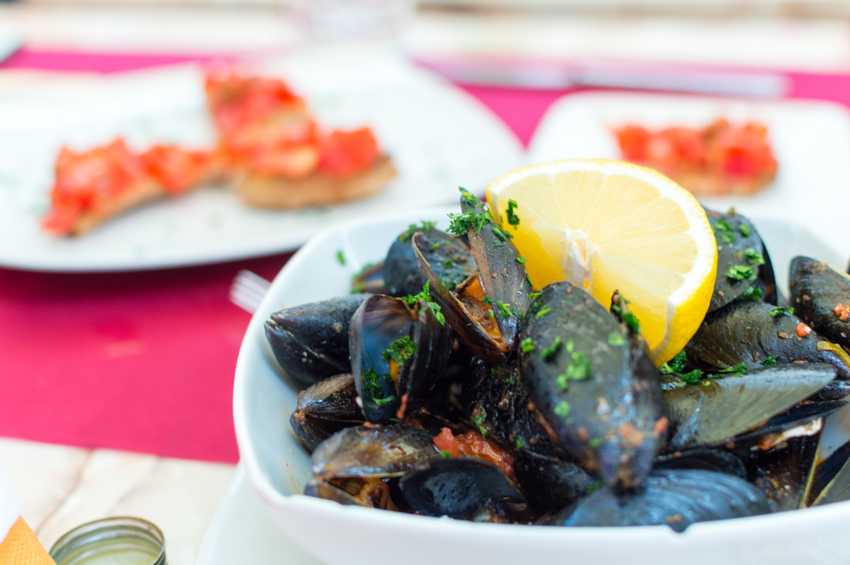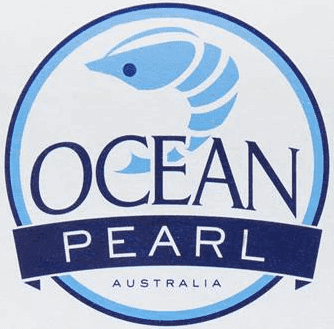Original research completed in 2019; information verified and various sections updated in October/November 2020 and May 2021.
Prawns, squid, scallops, mussels… there are a multitude of seafood products we Kiwis enjoy!
Slavery is often involved in producing seafood, so we’ve researched what’s happening in the supply chains of seafood products, and prominent brands, currently available in New Zealand.
Find out how you can buy seafood while supporting the human rights of those involved in the supply chains.
What’s the problem?
Many kinds of seafood are at high risk of having slave labour in their supply chains. Imported shellfish is commonly either harvested or farmed with slave labour. Squid is often caught in highly abusive working conditions where pay is commonly withheld, and workers are often given drugs to keep them working 23 hours a day. Meanwhile many kinds of crustaceans are commonly peeled with slave labour, and farmed prawns may be fed fishmeal that is produced from fish caught by vessels using slave labour.
There are three main risk points for seafood products:
- Catching/farming – Was slave-labour used at the seafood farms or used on vessels catching the seafood? The country of origin can be a good indicator here (some countries have a greater prevalence of slave-labour than others), as well as how far from shore the seafood was caught (it’s easier to hide slavery on operations far out at sea).
- Processing – Did processing happen in workplaces that use forced or child labour? Even if caught or farmed in a country with strong labour rights, if the seafood is processed before being sold to consumers, it will often be sent to countries where forced or child labour is used in factories. For example, some prawns are sold simply frozen without further processing, others are shelled or made into dumplings. Regardless of their country of origin, processed prawns are usually sent to China, Viet Nam and other low-wage Asian countries where there is high-risk for forced and/or child labour in processing factories.
- Feed – Was slave-labour involved in producing the feed that the seafood grows on? For any farmed seafood, this is a big risk point because fishmeal and other aquaculture feeds are often made from fish which may have been caught or processed by forced and/or child labour.

Photo by Christopher Carson on Unsplash
How to buy seafood without supporting slavery
There are a few ways to tell whether seafood is slave-free.
If the supply chain is at high-risk for slavery (e.g. the seafood is fished in countries where slavery is prevalent, or is processed before being sold), extra checks such as audits can help ensure human rights are still upheld. Kingfisher is a good example of this and was a standout from the companies we researched.
If the supply chain is at low-risk for slavery (e.g. the seafood comes from countries with strong labour laws, and is sold whole) then it’s highly likely there are no concerns there. This is the case for several other companies’ products that we researched.
Below are the options we’ve found currently available in New Zealand that we’re confident are slave-free.
Shellfish
- Mussels, oysters, cockles, kina, geoduck, tua tua, pipis and clams – Any of these from New Zealand are slave-free.
- Paua – Any that is wild-caught in New Zealand is slave-free. Note: Paua that is farmed may not be slave-free, however most paua sold in New Zealand is the wild-caught variety. Farmed paua will be clearly marked as such.
- Scallops – Any wild-caught in New Zealand, Peru, Australia or the US are all slave-free. Gourmet Seafoods (online), Takitimu Seafoods (online), Shore Mariner (available from New World and Countdown), and the fish counters at Countdown, New World, and PakNSave, all stock scallops from at least one of these four countries. Note: Some of these brands/fish counters also stock scallops from other countries which are at high-risk for slavery. You can check the information on the packet or ask the staff at the supermarket’s fish counter to confirm which country the scallops are from on any given day.
What’s happening in their supply chains?
These types of shellfish are all wild-caught in countries with low-risk fishing industries, and compared to other products, they require much less processing before being sold in New Zealand. This means forced labour and child labour is unlikely to have occurred in the supply chain. Find out more in our research notes here.
Crustaceans
- Prawns / Shrimps – Prawn products sold by Kingfisher or Ocean Pearl, unpeeled Argentinian red shrimp, and unpeeled wild-caught Australian prawns are all fine. See list of products. (Unfortunately we haven’t found any slave-free prawn dumplings.
- Crayfish / Lobsters – Any unpeeled crayfish from New Zealand are slave-free. Also any whole lobsters from Australia, or whole crayfish from New Zealand (these are often described as lobsters) are slave-free.
- Crabs – Any unpeeled crabs from New Zealand or Australia are slave-free. For example, unpeeled Australian spanner crabs, and New Zealand paddle crabs.
What’s happening in their supply chains?
Kingfisher’s prawns are from farmed prawns from Thailand, which usually would be cause for concern. However Kingfisher’s prawn farms are audited and their processing factories adhere to the UN’s Good Labour Practises. As for the feed fed to the prawns, we’ve learned that Kingfisher only buys from suppliers who are audited to check for slave and child labour.

Ocean Pearl’s prawns are wild-caught Australian prawns that are simply frozen on the fishing vessel.

The Australian fishing industry is low-risk for slave-labour, as is the Argentinian fishing industry. So any wild-caught prawns from these locations which are sold unpeeled would be slave-free, as there’s no concern at the fishing stage and no processing occurs since the prawns aren’t being peeled.
For the same reasons, unpeeled crayfish, whole lobsters, and unpeeled crabs from New Zealand and Australia also have slave-free supply chains.
Find out more in our research notes here.
Squid
Unfortunately we weren’t able to find any squid products that are definitely slave-free. Find out why in our research notes here.
Related articles
For more information on this topic:
For other types of fish products, check out these pages:
- Shopping guide: Salmon
- Shopping guide: Tinned tuna and sardines
- Research notes: Fish oil and omega 3 supplements
- Research notes: Fish in petfood

Our bottom line is that fish, cocoa and sugar should be free of child and slave labour right back to the original boat or farm.
Within this, where possible we also:
- identify goods produced in low-income countries (as buying those increases employment opportunities there);
- identify which goods are produced in the best labour conditions available (as supporting those brands will increase the pool of good jobs people have to choose from).
Find out more about our principles and check out our other guides.